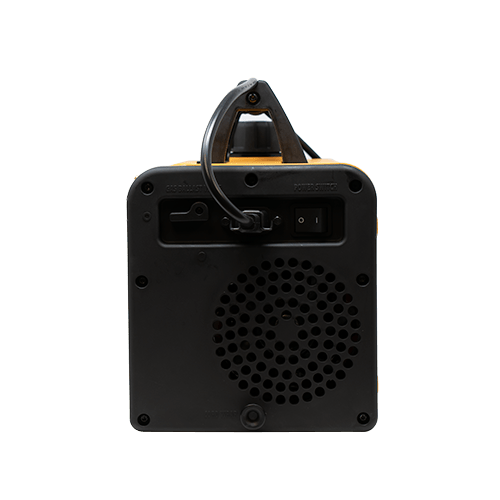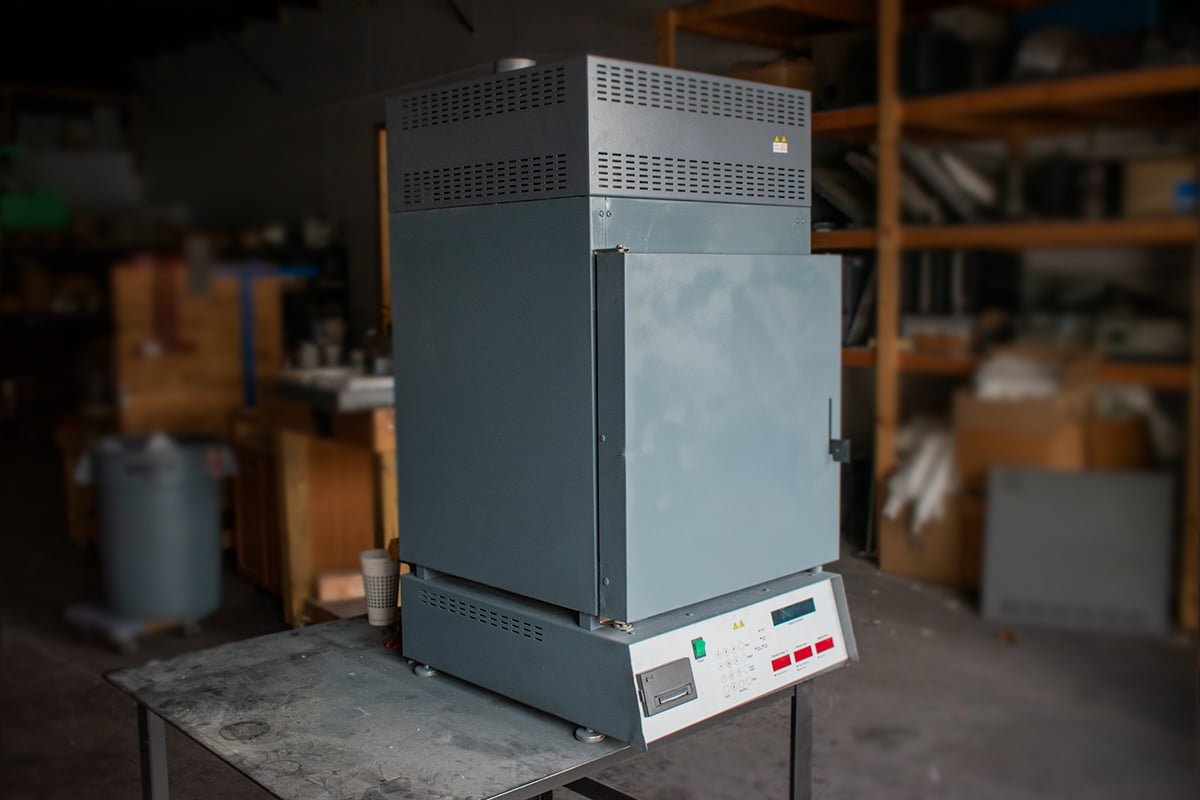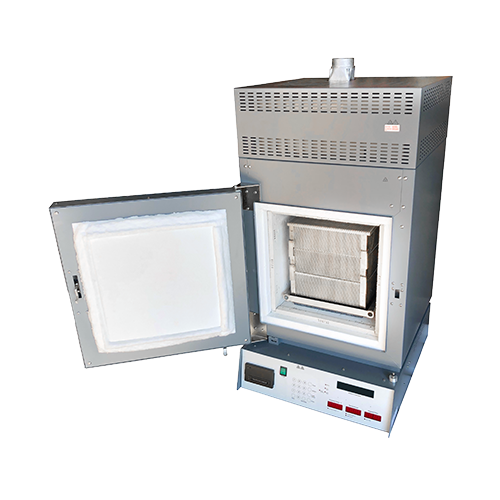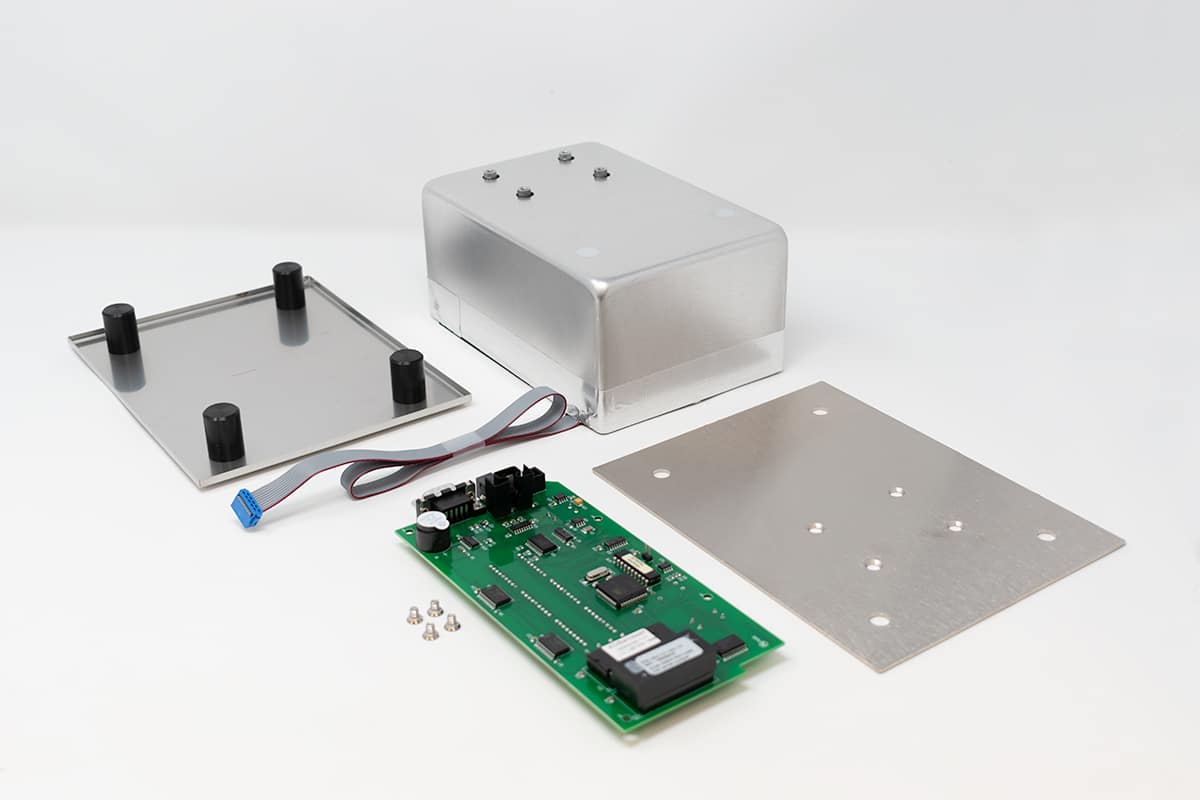5 Cost-Effective Asphalt Testing Products
Our industry has had more changes in the last 10 years than it has seen in the prior 50. Each change seems to come with more complicated equipment and an even higher price tag. And of course, we, the quality control focused professionals, are left to figure out how to get what we need with what remaining budget we have.
In this article we’re going to lay out our top 5 picks for testing equipment and supplies that will help you strike the perfect balance between cost and performance. We’ll tell you a little about each product, explain why and how they save you money, provide the pros and cons of each, and finally, give you, our rating.
Table of Contents
Our List of cost-effective asphalt testing products
The RiceVac – 4.7
A long time ago oilless vacuum pumps were introduced in our labs as the cost-effective solution against their bulky and expensive oil counterparts. Today that script has flipped, and oil vacuum pumps are becoming much more cost-effective while still maintaining their higher performance. Enter the RiceVac.

The unit looks something like a Magnavox Boombox from the 80’s. It was originally designed to work for HVAC technicians out in the field, which is probably why it works so well in our labs. It’s robust enough to take a beating, it can handle water systems really well, and its oil can be replaced while it’s running. This makes the RiceVac a perfect vacuum pump to use for your Rice Test Setup.
Pros
- It costs less than oilless vacuum pumps on the market.
- It has an 8CFM flow rate and can pull down to 15 microns (0.02 mmHg) at any of its 4 ports (1) 1/4”, (2) 3/8”, (1) 1/2.”
- It only uses 8 oz of oil at a time meaning you get 16 oil changes out of a gallon of oil.
Cons
- Because it’s an oil pump it does produce vapor. The manufacturer came up with a solution for this by fitting the outlet with an adapter to attach to a garden hose but nonetheless the vapors are still there.
- It has a bigger footprint than the oilless models at 7.9” x 11.7” x 16” (l x w x h)
- It weighs more than most vacuum pumps at 27lbs
Gordon Technical Rating – 4.7
Cost Effectiveness: 5/5
Performance: 5/5
Safety: 4/5
Quality: 4.5/5
Coolness: 5/5
Final Rating: 4.7/5
The RiceVac scored high on cost-effectiveness with its lower sticker cost and efficiency of use with its consumables.
The RiceVac scored high on performance due to its quick pull-down time and the fact that it pulls down to the same level every time without adjustment. It also gets bonus points for having little to no fluctuation during tests.
We took a point off of the RiceVac due to the fact that it still produces oil vapor. Even though the manufacturer made a workaround, we felt that this is where oilless pumps really shine.
We took half a point off for quality simply due to the quick oil change containers. If they’re not lined up properly (and it’s a small margin of error), oil can leak if you’re not paying attention.
The RiceVac received full marks for coolness since the retro look is neat, and its oil reservoir has a backlight so you can see when you need to change the oil.
Click Here to Get Yours Today!
The Gas Drying Jar – 4.2
There have been a lot of new and exciting technologies brought to market in the last few years. Sometimes, however, existing technologies manage to outperform newer counterparts, at least when it comes to the budget. Enter the Gas Drying Jar.
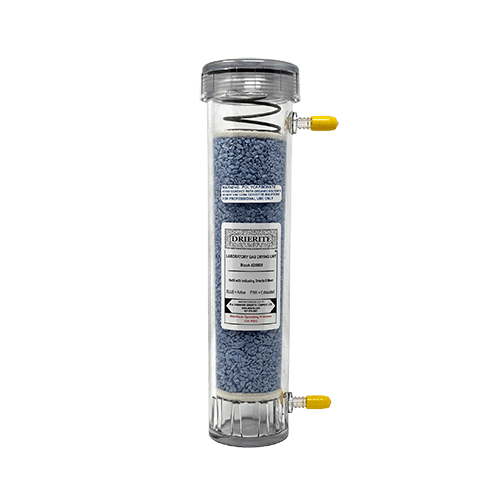
The Gas Drying Jar has been around for a while. It uses a desiccant to scrub the air of water vapor and passes on good dry air that won’t kill your vacuum pump. You can get your desiccant in a few different forms but the two most popular are indicating and non-indicating.
Pros
- It doesn’t have any moving parts which makes it less prone to mechanical failure
- The desiccant can be re-activated multiple times before it’s spent meaning your consumables last longer
- Replacing the desiccant is easy and can be done without having to disconnect it from the system.
Cons
- Replacing the desiccant might be easy but it is very time consuming
- Sometimes the desiccant can be used up very quickly (in 5-7 tests) if your rice bowl has too much water in it
- The indicating desiccant can color prematurely in certain circumstances causing more frequent than necessary changes.
Gordon Technical Rating 4.2
Cost Effectiveness: 5/5
Performance: 3.5/5
Safety: 4.5/5
Quality: 4/5
Coolness: 4/5
Final Rating: 4.2/5
The Gas Drying Jar scored high on cost-effectiveness. An entire setup costs less than $200, and a jar of desiccant can last a long time.
We took a point off in performance because of the inconsistency of the desiccant. Sometimes it performs really well but other times it shows as being spent early. We took another half point off because the desiccant takes about 2 hours to dry completely in an oven during recharge.
We took a half point off for safety because the spring that pushes the desiccant in place can sometimes launch across the room if you’re not paying attention.
We took a full point off in quality because the inlet and outlet valves have a tendency to break if smashed up against something. While we should expect everyone to be careful with them, I think we also know the reality of what goes on in a lab.
I personally took a point off for coolness because the thing is so old, but I guess as far as old things go this is still pretty cool looking.
Click Here to Get Yours Today!
Gordon Technical Paper Discs – 4.9
I’m going to be honest; I am completely biased on this product because I designed the artwork so take this all with a grain of salt. We all use gyratory discs, or paper discs, and most companies sell them, however ours are the result of hours and hours of painstaking research that I was voluntold to perform. Enter our gyratory discs.

When it came to choosing the paper for the disc we took a lot of factors into consideration. We started to test 20 different paper types and whittled them down to three contenders. We then did side by side comparisons of the three and… they all performed the same. We then measured the thickness of each and found that there was a 0.02mm variance between them. So in the end we went with the paper that we felt would perform the best and went well with all specifications.
Pros
- The G is very sexy and will look sharp in any lab
- The discs have been fully tested with many different mixes to ensure they work well under any conditions
Cons
- The very sexy G might distract your technicians from their work (Did I mention I designed the artwork?)
Gordon Technical Rating – 4.9
Cost Effectiveness: 5/5
Performance: 5/5
Safety: 4.5/5
Quality: 5/5
Coolness: 5/5
Final Rating: 4.9/5
The gyratory discs scored well on cost-effectiveness. You can buy a 4 pack of 500 6” discs or a 4 pack of 1000 4” discs from us for only $25 each.
They got full marks for performance due to them being easy to peel off of the puck and their ease of getting them into the molds.
We took off a half point for safety since lab techs kept getting distracted looking at the beautiful G in the center.
They got full marks for Quality as each one of them was tested extensively within our testing network and stood up to even the most brutal techs. They are the perfect size to fit into the mold while still covering everything important.
Obviously, they are the coolest discs on the market, so they were definitely going to get the best marks.
Click Here to Get Yours Today!
The Instrotek AutoRice – 5
Ok now before you skip ahead hear me out: I know that the AutoRice has a high sticker price, but the amount of benefits that come with it truly outweigh the cost. There is no better unit for performing a Rice test than the Instrotek AutoRice.
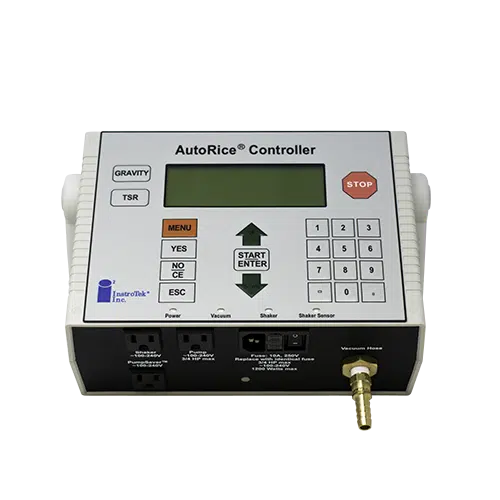
With the recent push towards Balanced Mix Design, the AutoRice is simply a lab staple that if you don’t have yet, you really need to get your hands on one.
This unit runs the entire test the same way, every single time. It controls the vacuum pressure automatically, sets the timer for you, runs the test, and stops when it reaches the test time, and even controls your vibrating table.
There is no margin of error between all of your lab techs. Every one of them can run the same test under the same conditions without sacrificing quality.
Pros
- Fully automated Rice test ensures that you are testing the same way every single time no matter who is running the test.
- Works with your existing lab equipment
- Can be wall mounted to save space
- Accurate to ± 1 mmHg
Cons
- It has a high sticker cost
Gordon Technical Rating
Cost Effectiveness: 4.9/5
Performance: 5/5
Safety: 5/5
Quality: 5/5
Coolness: 5/5
Final Rating: 5/5 (I rounded up)
We deducted 0.1 points for the high sticker price, but honestly, it feels unfair to do so.
We gave the AutoRice full marks in performance. Not only does it run the entire test for you automatically but it can work with whatever equipment you have. If your vacuum pump has high pressure swings, the AutoRice will stop the timer and continually adjust it until the vacuum pressure is exactly where it needs to be before starting it back up again.
Because it’s fully automated we gave full marks for safety. They even rounded the corners of the box so there aren’t any sharp points.
The quality of this product is unmatched and therefore it received full marks.
I gave this product a full coolness score because it makes the test easier to perform and makes the results way more accurate and reliable. It’s not often you see a product that does both of those things.
Click Here to Get Yours Today!
Click Here to read more about the product on Instrotek’s Website
Asphalt Sample Boxes – 4.9
While lined boxes aren’t a new technology, you’ll be hard pressed to find one that doesn’t use some sort of wax compound to make them non-stick. There’s nothing wrong with wax on its own, but when mixed with high temperature asphalt the waxy residue makes the sample useless. Meet the Asphalt Sample Box.
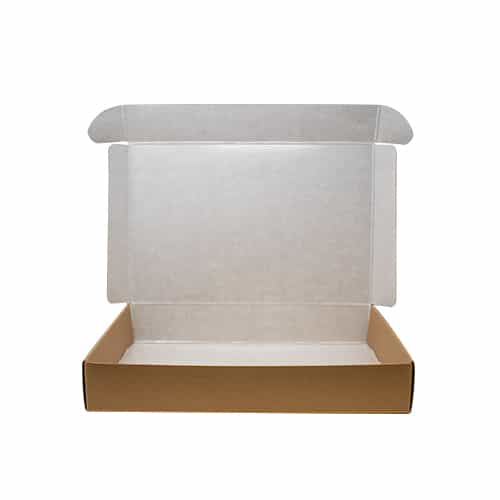
Our boxes use a silicone based release agent that works even better than lab lease paper. You have no segregation in your sample and there is almost no residue left behind. As tests get more and more precise, the amount of liquid that you have can impact your test results significantly. If your release paper holds onto too much, your mix can even fail.
The best part about our boxes is that they are oven safe. Yes, you read that right: our paperboard boxes can be safely put in the oven and reused again and again. Maybe that’s why some of our customers have even used them as pans in a pinch.
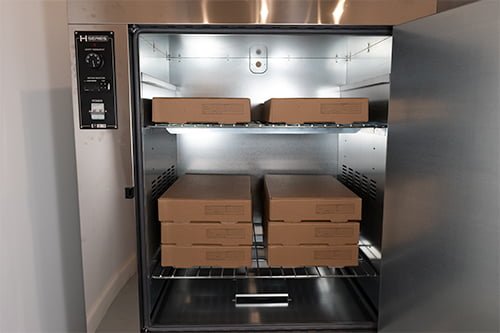
Transporting samples used to be messy. Lab lease paper in a cardboard box has a tendency to slide around. Some samples have even been known to fall out when moving. Our lining stays in one place and our tab system keeps the box securely closed.
Pros
- Able to be stacked inside an oven and has a writable surface to keep track of which sample is which.
- The tab system keeps your samples contained
- Easy to fold and dismantle (should you wish to do so)
Cons
- They cost more than cardboard and lab lease paper on their own (before adding the cost of labor to put them all together)
- They take up a lot of room when they’re not being used
Gordon Technical Rating
Cost Effectiveness: 4.5/5
Performance: 5/5
Safety: 5/5
Quality: 5/5
Coolness: 5/5
Final Rating: 4.9/5
We took a half point off for cost-effectiveness on a technicality. If you use lab lease and a cardboard box you do save some money, however because that method has proven to be unreliable, we still feel like our boxes are the better choice which is why it’s only half a point.
The asphalt sample box received full marks for performance because of its oven safe properties and robustness during transport.
We gave the boxes full marks for safety due to their ability to remain closed. If the sample stays in its container, there’s a much lower chance of your technicians getting burned by samples.
They got full marks in quality due to their tab system and reusability.
We gave the boxes full marks for coolness because of their ability to not only hold a large amount of sample but also to keep your sample up to temperature in an oven. Our gyratory box even has holes so that you can monitor temperature with a thermometer.
Click Here to Get Yours Today!
Conclusion
We had a hard time choosing the top 5 products here in the office and there were some arguments around what exactly a “cost-effective product” is.
In the end we judged a cost-effective product to be one that saves money over the long term and so a lot of our single use items weren’t considered, even though they did save the customer money in the short term.
We also had a hard time defining “product” since some of us felt that our gyratory mold resurfacing was a good candidate for this list. It was ultimately judged to be a service instead of a product and so it was removed. I guess I’ll have to write one of these on services now…
We didn’t include products that are used outside of their original intentions as we felt that might be misleading although there are still a few good ones.
So, there you have it – our top 5 cost-effective asphalt testing products that will help you balance performance and budget. We know the struggle of trying to find the right equipment and supplies that won’t break the bank, so we hope that these recommendations make your life a little bit easier.
And hey, if you’re still on the hunt for some more cost-effective solutions, keep an eye out for our upcoming article on cost-effective asphalt testing services!

